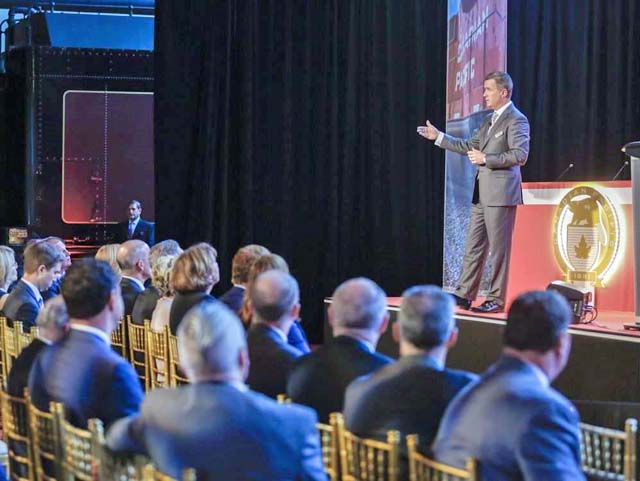
Aims to Repair Bruises
Calgary Alberta - Canadian Pacific Railway (CP) CEO Keith Creel said Wednesday he plans to improve relations with employees and repair some of
the "bruises" left behind after five years of drastic corporate restructuring at the Calgary-based company.
However, Creel said he will not apologize for the job losses and rapid cost-cutting that occurred during the tenure of his predecessor Hunter Harrison, adding
that without significant change, CP would not have been able to reverse its flagging fortunes and become one of North America's most efficient
railroads.
"We didn't get it all right. No company ever can," Creel told shareholders at the company's AGM, held at its Calgary headquarters.
"But at the same time, I'm not going to apologize for what had to be done. This company was in serious trouble."
The AGM coincided with Creel's 100th day at the helm of CP, following Harrison's early departure to take the top job at U.S. railroad CSX
Corporation.
Creel acknowledged some employees are angry about the drastic head count reductions that have occurred at CP over the past five years (the company now has
about 12,000 employees, down from 19,000 in 2012) and said he has been holding town halls across the company's network to hear their concerns.
"My vision is to rebuild some of the bridges," Creel said.
"We've got to reconnect with our employees."
Creel said CP has introduced a new disciplinary process in a bid to address employee concerns that the old system was arbitrary and overly
punitive.
He added the company has also reached a new five-year contract with the United Steelworkers Local 1976, which represents administrative and intermodal
employees at the railway, and is preparing to head into contract negotiations with the Teamsters Canada Rail Conference (TCRC), which represents engineers and
conductors, before the end of the year.
In an interview, TCRC president Doug Finnson said the overall tone has improved at CP since the departure of Harrison, who was often criticized for creating a
"culture of fear" among employees at the railroad.
"I have to acknowledge there has been a shift," Finnson said.
"But the workers are looking for management to walk the walk, and not just talk the talk. Building a positive relationship requires much more than just
positive statements."
The Teamsters remain concerned about CP's workplace fatigue management practices, Finnson said.
The company has submitted a proposal to Transport Canada to reduce the number of hours railway employees can spend at the controls of a train under Canadian
law, but the union has argued the move would do little to address the real causes of workplace fatigue and would prevent train crews from getting home to their
families in a timely manner.
The union, which says CP is short approximately 1,000 engineers and conductors in Western Canada alone due to cost-cutting, has also been a vocal critic of the
railway's practice of training managers and office workers to drive trains.
But Creel told reporters following the AGM that CP has no intention of halting the practice, which he said gives the railway extra manpower to call on in the
event of extreme weather or other unexpected disruptions.
"This is a resource-rich country, we can't just stop grain trains, potash trains, and coal trains, because we have a temporary shortage of
employees," Creel said.
"We've got to protect the movement of freight for our customers and protect the reputation of this country as we export and import the goods we
produce."
CP shareholders voted 71 percent in favour of the company's approach to executive compensation at this year's AGM.
After losing a "say-on-pay" vote last year, CP introduced a number of changes to the way it pays its executives, cutting down on perks like the use
of company aircraft and putting more weight on safety and operating income when calculating bonuses.
Amanda Stephenson.
of the Canadian Copyright Modernization Act.



